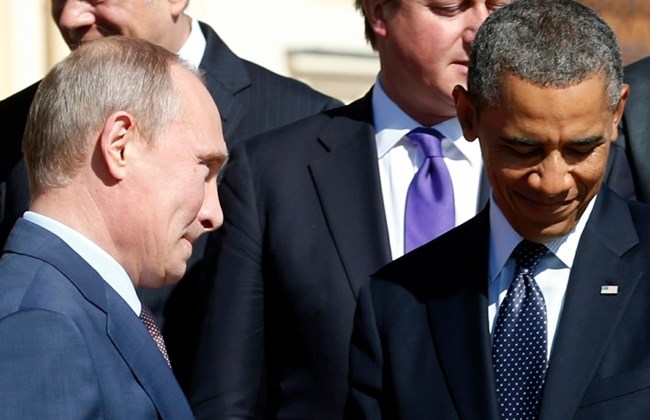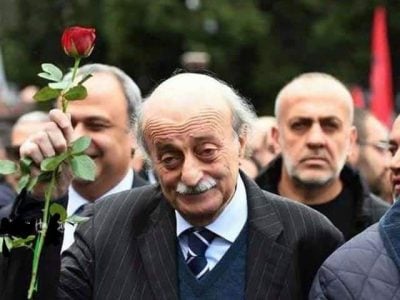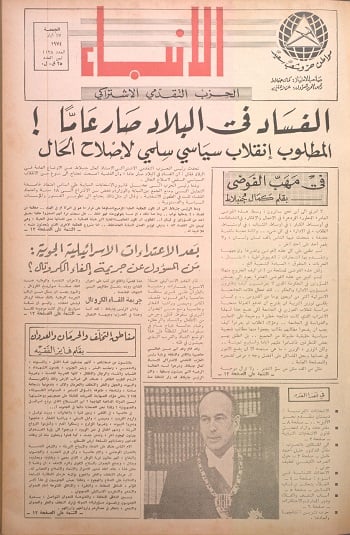The Cold War has returned with a vengeance
David Ignatius / The Daily Star
19 مارس 2015

The language of the Cold War has returned with a vengeance, with renewed talk of nuclear alerts, alleged testing of medium-range nuclear missiles and worries about NATO’s defense umbrella.
President Vladimir Putin’s seizure of Crimea just over a year ago has now broadened into what some U.S. officials see as a wider Russian challenge to the post-Cold War order. Reading recent news reports, it’s almost as if U.S.-Russian relations have fallen through a black hole back toward the deadly confrontations of the 1980s.
The debate about Russian aggression isn’t just about Ukraine. Putin’s activities are rekindling core concerns that created the NATO alliance. Unfortunately, this time around, there appears to be less trans-Atlantic resolve to combat Russian threats.
The Obama administration is debating how to augment its Russia policy, but there are clear internal disagreements. Secretary of Defense Ashton Carter and Gen. Martin Dempsey, the chairman of the Joint Chiefs of Staff, appear to favor sending lethal arms to Ukraine. But President Barack Obama seems caught between a desire to contain Russian actions and his continuing hope for Moscow’s cooperation both in the Iran nuclear talks and in settling the Syrian civil war.
A vivid example of the Cold War time warp was Putin’s revelation in a Russian documentary last weekend that he considered putting Russian nuclear forces on alert early last year when Russia intervened in Crimea after the Ukraine government collapsed. His comment illustrated anew the danger that the Ukraine conflict could spiral out of control.
The arms-control process, which helped steady the Cold War, now seems to be running in reverse. Russia withdrew last week from consultations about the 1990 Conventional Forces in Europe treaty, signaling that it has effectively abandoned that pact. Moscow has also balked at discussing any additional cuts in nuclear weapons in a once-planned expansion of the 2010 “New START” treaty.
The most worrisome breakdown of U.S.-Russian détente may be the unraveling of the 1987 pact governing medium-range nuclear forces in Europe, known as the Intermediate-Range Nuclear Forces, or INF, treaty. Last July, the U.S. accused Russia of breaching that pact by testing a ground-launched cruise missile that violated agreed limits. The Russians countered with accusations about alleged U.S. violations.
Carter warned in congressional testimony last month that the U.S. would consider military options if Russia didn’t return to compliance with the INF treaty. Those might include “active defenses” to stop nuclear-armed cruise missiles and “countervailing strike capabilities,” he said.
The potential demise of the INF agreement is especially significant because it was a crucial step toward ending the Cold War. The treaty was negotiated after the U.S. and its European allies decided to counter Russian deployment of SS-20 nuclear missiles by installing comparable Pershing missiles in Europe. That led Soviet leader Mikhail Gorbachev to halt the SS-20 plan and sign the treaty, encouraging what Putin now sees as an era of Russian weakness and defeat.
As Putin has moved to restore Russia’s power, he has used tactics, such as arming the separatists in eastern Ukraine, that are closer to intelligence operations than to conventional military action. This approach, dubbed “hybrid warfare” by Western analysts, has confounded the U.S. and its NATO allies; they have so far refrained from providing Ukraine with lethal weapons that might combat the Russian-armed proxy forces.
Ukraine isn’t a NATO member, and the U.S. has tried to signal since the crisis began that it would use military force to stop similar aggression against a NATO member under Article 5 of the alliance’s treaty. But the commitment to retaliate against outright attacks begs the question of how NATO would respond to Ukraine-style subversion against a member by “men in green” proxy forces. If Russian-speaking separatists seized territory in a Baltic country, for example, would NATO strike Russia? Such contingencies need more discussion.
And does NATO still have the military muscle to mount an effective response, assuming it has the political will? The United States has cut its forces in Europe to a fraction of what they were during the Cold War, and European nations, distracted by economic crisis, haven’t implemented pledges to boost their own forces. Even the United Kingdom, traditionally America’s most stalwart NATO ally, isn’t meeting the defense-spending target set last year at a summit in Wales.
It’s back to the future in Putin’s Europe. But the muscle memory of deterrence seems to have atrophied. It has been so long since NATO was really tested that alliance members may have forgotten what collective self-defense really means.
 عن أمل جنبلاط المتجدد: لبنان يستحق النضال
عن أمل جنبلاط المتجدد: لبنان يستحق النضال
 صحافيون أم عرّافون!
صحافيون أم عرّافون!
 ماذا يجري داخل أروقة بيت الكتائب المركزي؟
ماذا يجري داخل أروقة بيت الكتائب المركزي؟


 عن الخرائط التي تُرسم والإتفاقات التي تتساقط!
عن الخرائط التي تُرسم والإتفاقات التي تتساقط!
 “الإنحراف في الحياة”/ بقلم كمال جنبلاط
“الإنحراف في الحياة”/ بقلم كمال جنبلاط
 هاشتاغ #صار_الوقت يحل أولاً في حلقة جنبلاط
هاشتاغ #صار_الوقت يحل أولاً في حلقة جنبلاط
 طاولة نقاش عن أزمة الصحافة في جامعة AUST
طاولة نقاش عن أزمة الصحافة في جامعة AUST
 عبدالله: ليظهر لنا وزير مكافحة الفساد حرصه في صفقات البواخر والفيول
عبدالله: ليظهر لنا وزير مكافحة الفساد حرصه في صفقات البواخر والفيول
 عبدالله: غريب أمر وزارة مكافحة الفساد!
عبدالله: غريب أمر وزارة مكافحة الفساد!

 Comment to Uri Avnery: How Sad What Is Looming Ahead
Comment to Uri Avnery: How Sad What Is Looming Ahead
 “Not Enough!”
“Not Enough!”
 … لمن لم يقرأ يوسف البعيني/ بقلم وسام شيّا
… لمن لم يقرأ يوسف البعيني/ بقلم وسام شيّا
 كمال جنبلاط في مولده الأول بعد المائة: تعاليمه وأفكاره ما زالت الحلّ/بقلم عزيز المتني
كمال جنبلاط في مولده الأول بعد المائة: تعاليمه وأفكاره ما زالت الحلّ/بقلم عزيز المتني
 رئيس حزب/ وليس (… سابقاً)/ بقلم د. خليل احمد خليل
رئيس حزب/ وليس (… سابقاً)/ بقلم د. خليل احمد خليل
 التوازن السياسي في لبنان
التوازن السياسي في لبنان
 لبنان… مشاريع انقلابية مؤجلة
لبنان… مشاريع انقلابية مؤجلة
 جنبلاط وحَمَلة أختام الكاوتشوك
جنبلاط وحَمَلة أختام الكاوتشوك
 Le Liban est un symbole de tolérance
Le Liban est un symbole de tolérance
 Our Automated Future
Our Automated Future
 The True Origins of ISIS
The True Origins of ISIS
 Les Misérables vs. Macron
Les Misérables vs. Macron
 عذراً أيها المعلم/ بقلم مهج شعبان
عذراً أيها المعلم/ بقلم مهج شعبان
 رساله الى المعلم / بقلم ابو عاصم
رساله الى المعلم / بقلم ابو عاصم
 إلى روح القائد والمعلم كمال جنبلاط/ بقلم أنور الدبيسي
إلى روح القائد والمعلم كمال جنبلاط/ بقلم أنور الدبيسي
 أسرار وعناوين الصحف ليوم الجمعة 14 كانون الاول 2018
أسرار وعناوين الصحف ليوم الجمعة 14 كانون الاول 2018














